Header: INSPACE
At the R-Day Music Festival in Haikou last January, beachgoers experienced more than just music. Also Architects designed a temporary, adaptable home for the Urban Nomad Art Museum right on the coast. This wasn’t a typical building, but a collection of unique structures meant to be a lively place for cultural exchange, easy to set up, take down, and reuse.
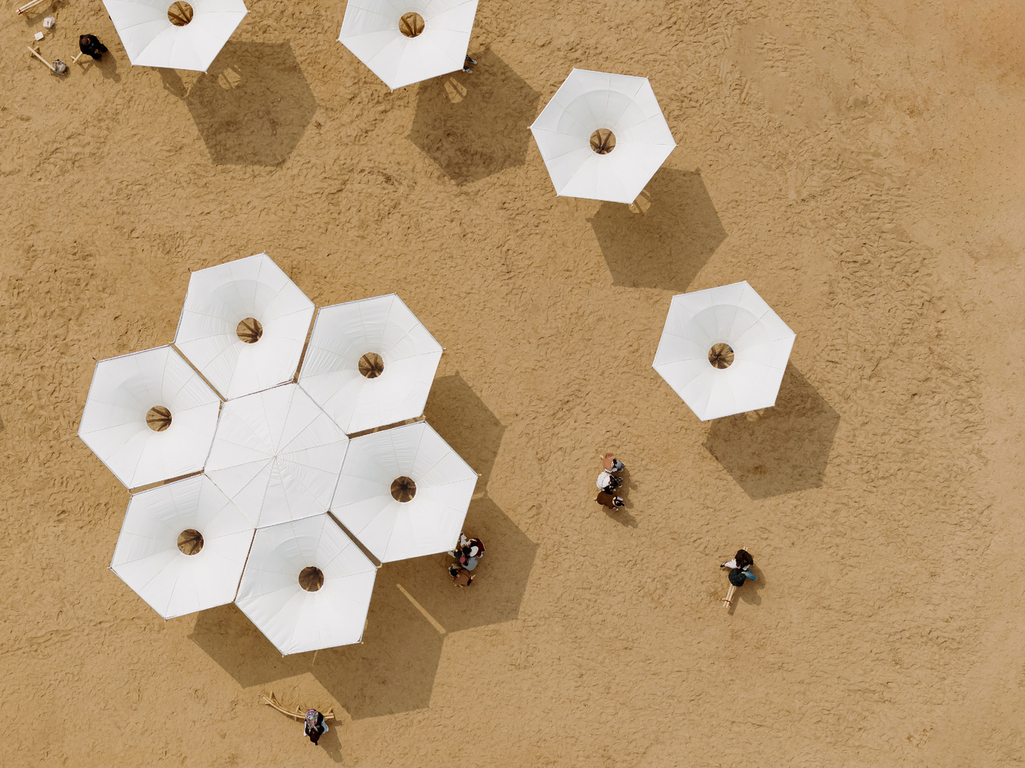
The Big Idea: Sound you can see
The designers at Also Architects looked to sound waves for inspiration. Think about how sound travels and fills a space. They wanted to turn that invisible energy into something people could see and interact with.
The result? A series of umbrella-like shapes made mostly of bamboo. These structures reach upwards, like frozen sound waves spreading out. Their hexagonal outlines mimic how sound ripples outwards, while the wavy fabric tops suggest different sound frequencies. These weren’t just sculptures; they created open areas inviting people to gather and connect.
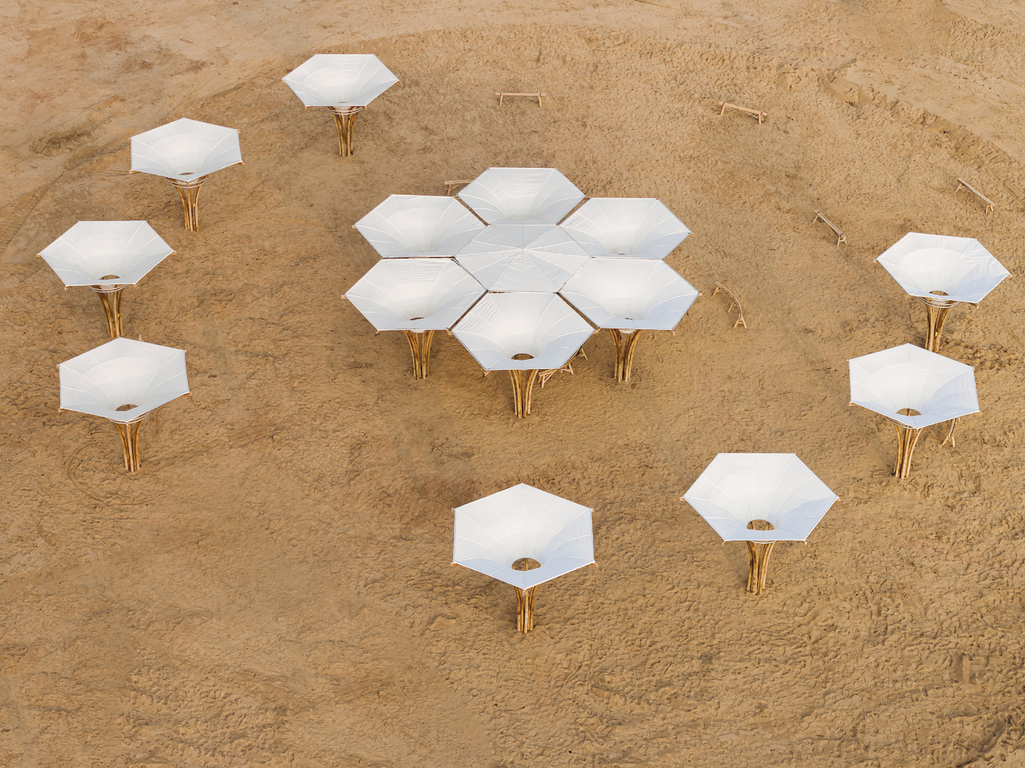
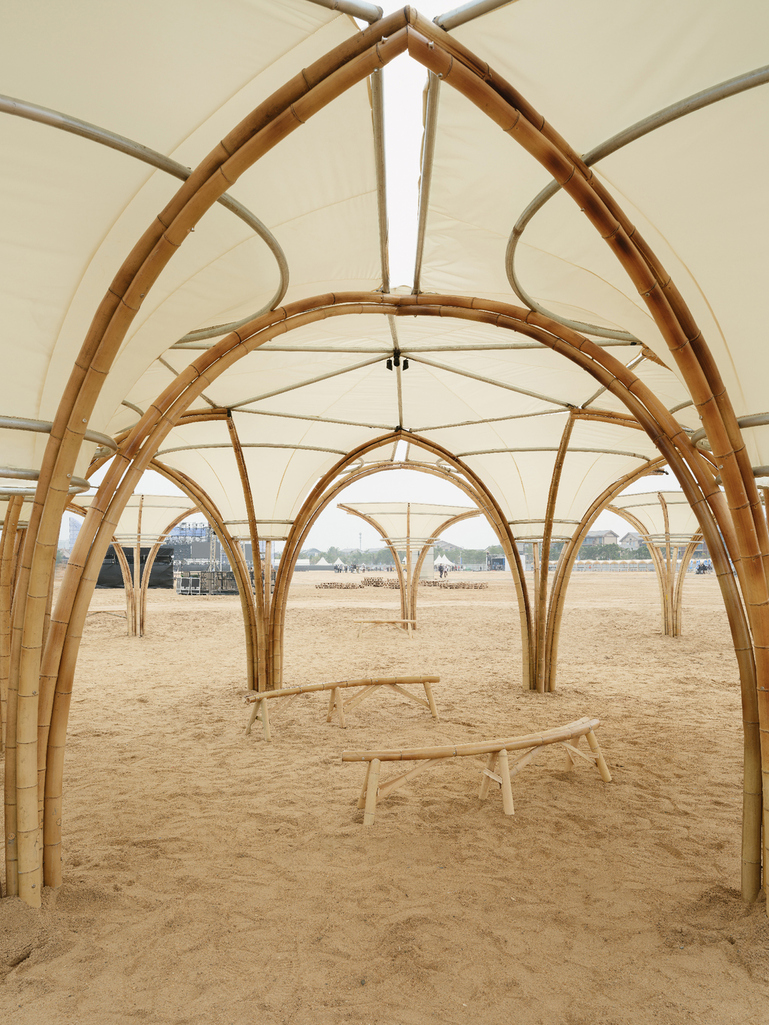

Putting it together: Bamboo, steel, and fabric
Bamboo was the star material, chosen for its natural look and eco-friendly qualities, which were important for a temporary setup. But making it work required smart construction.
- The Structure: Each umbrella’s heart is a central steel ring. Heat-bent bamboo poles curve outwards from this ring, creating a strong yet graceful shape.
- Connections: Custom metal connectors were designed to precisely link the bamboo and steel parts. This made assembly quick and allowed the pieces to be easily removed later.
- The Canopy: The fabric tops weren’t just draped over; they were pulled tight using steel tubes inside, creating a distinct funnel shape. Gaps were intentionally left in the fabric to let sunlight filter in and allow sea breezes to pass, reducing wind load. WOY Lighting handled the lighting design, adding another layer to the experience.
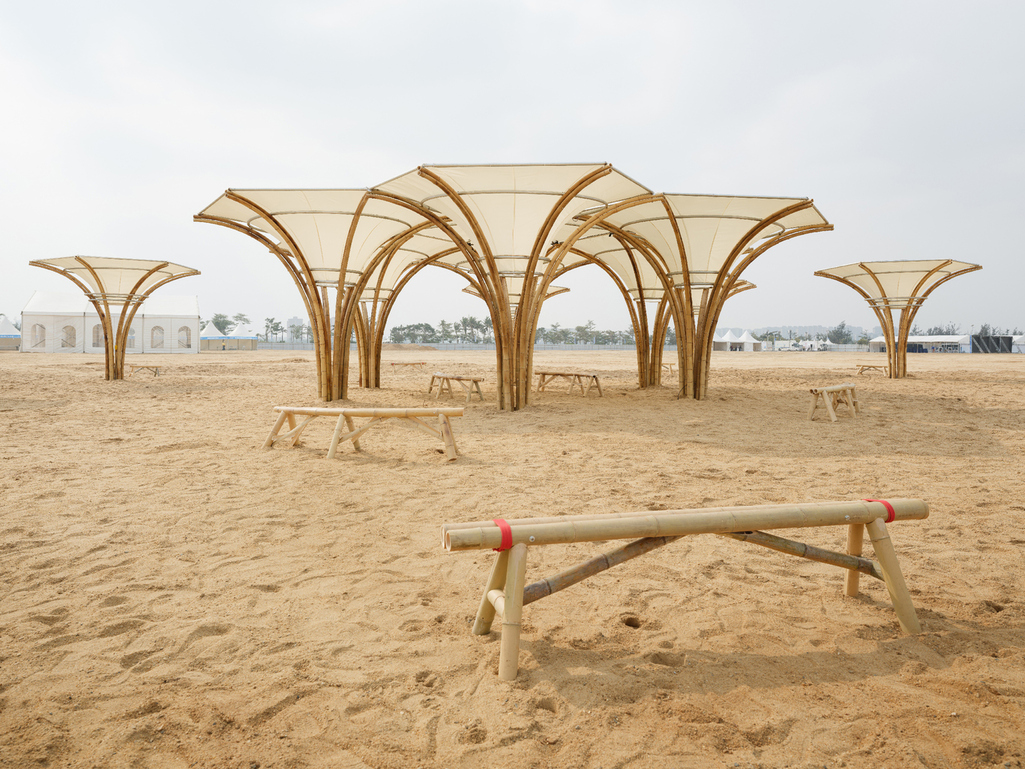
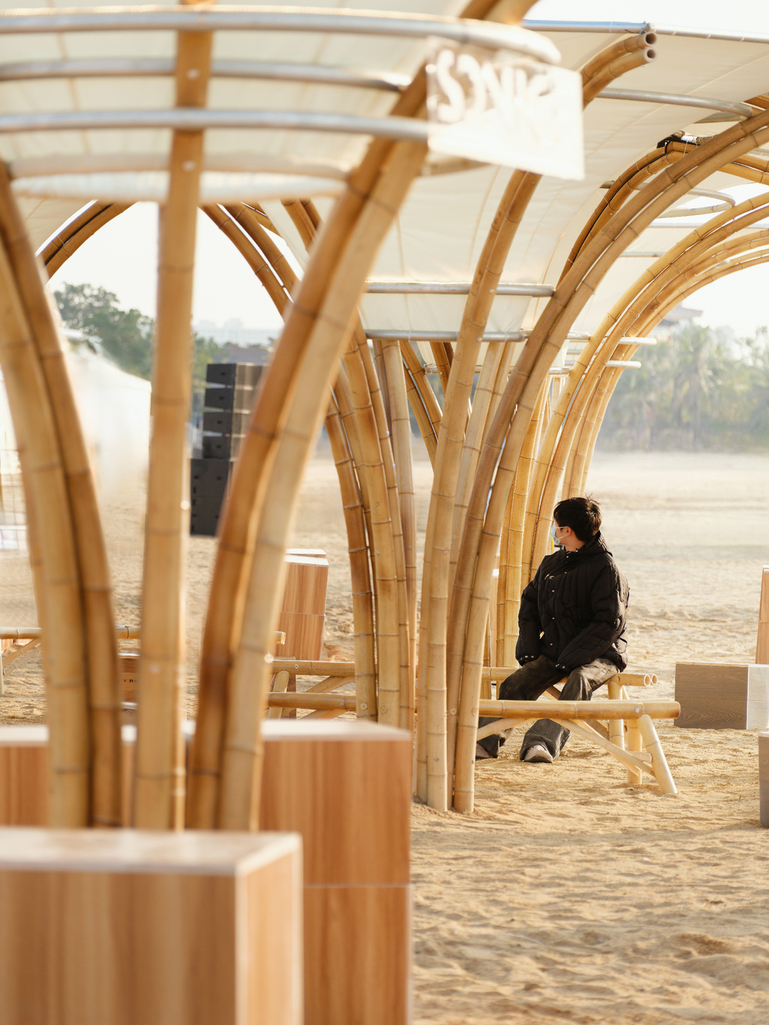
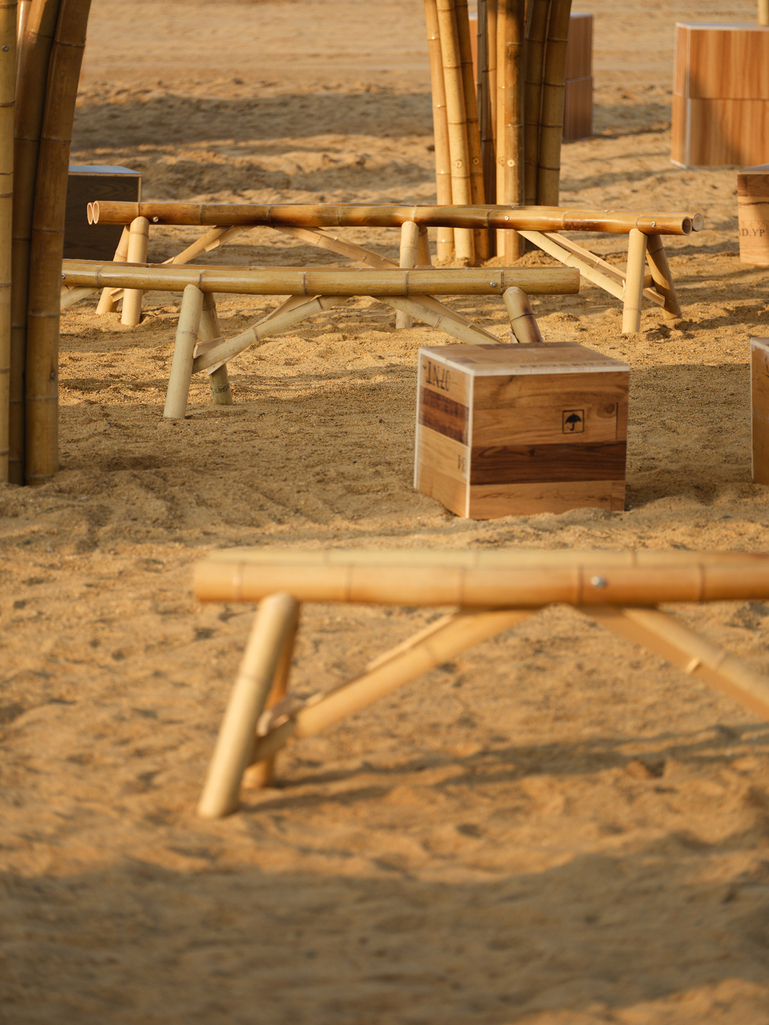
Shape-shifting space
The modular design offered great flexibility in arrangement, with the team planning for three main setups: structures lined up in a row, arranged in circles, or scattered freely across the site. This adaptability was put into practice at the R-Day Music Festival.
Modules were lined up to create a long, sheltered market area. Talks or performances were arranged differently to help with the sound environment. A more spread-out layout in relaxation zones allowed the coastal air to flow through easily. This built-in flexibility meant the space could readily adapt to the festival’s different needs on the fly.
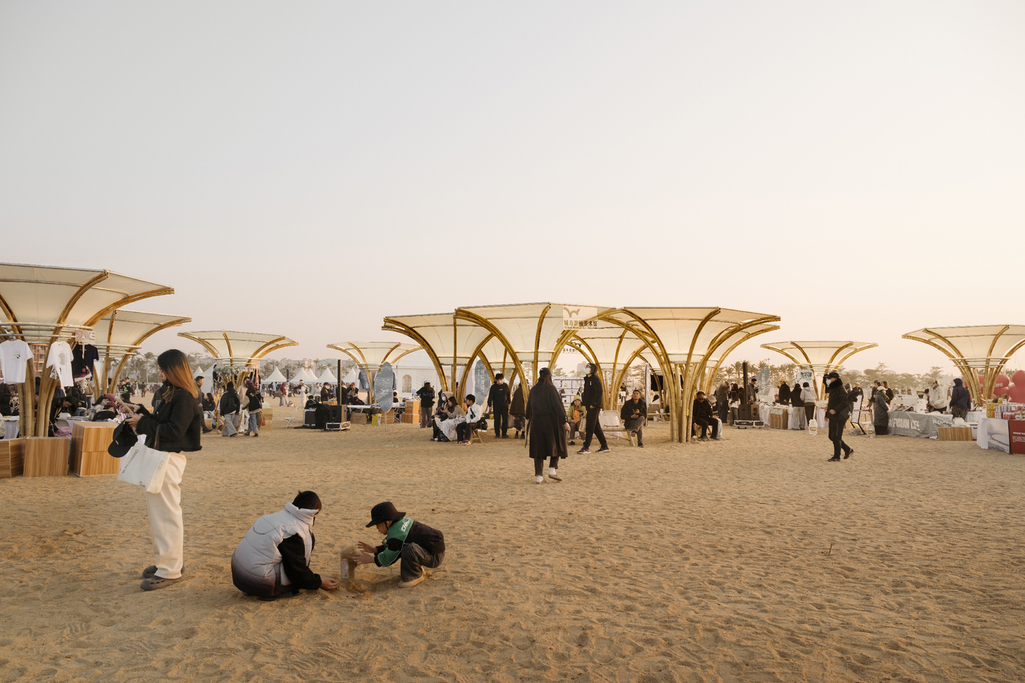

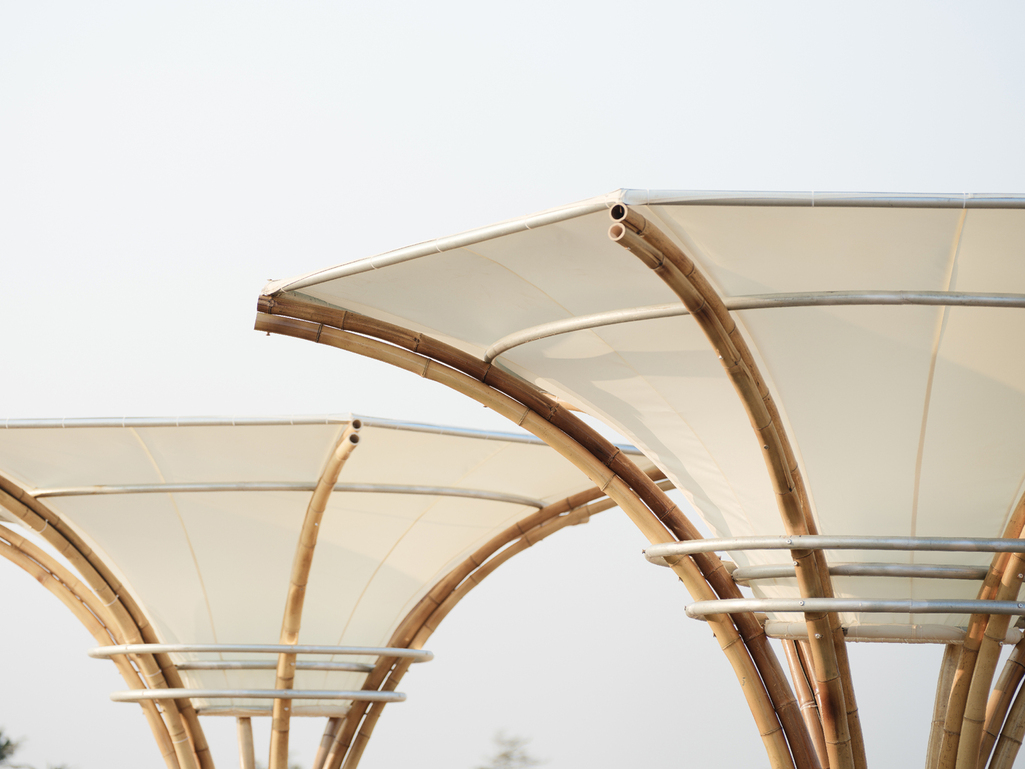
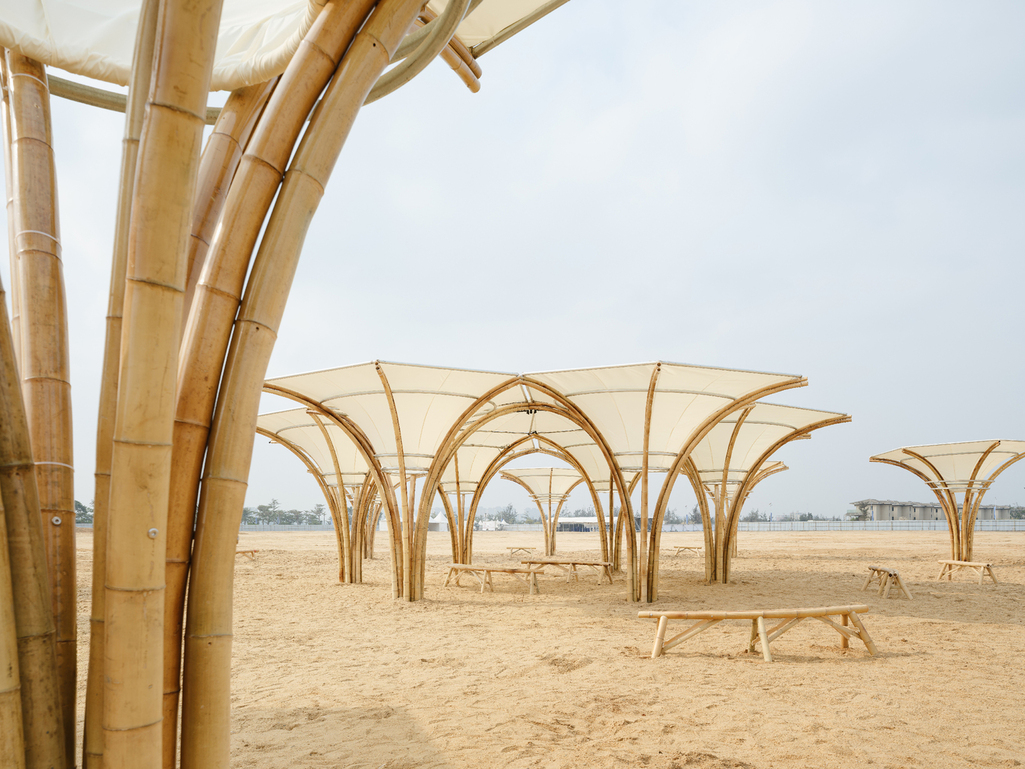
Art that doesn’t go to waste
What makes this project really interesting is the plan after the festival, as the Urban Nomad Art Museum and Also Architects didn’t want this to be disposable art. The entire setup was designed specifically to be taken apart easily. The fabric canopies will be repurposed following the event into merchandise like bags or other creative items. The bamboo parts won’t be thrown away either; they are set to be transformed into public furniture for use in cities, ensuring the materials continue to be utilized.
This approach treats the installation not as a one-off, but as a resource that can be reused and reimagined, much like nomadic cultures efficiently use materials as they move. It’s about finding lighter, smarter ways for art to travel, adapt, and become part of everyday life long after an event ends.
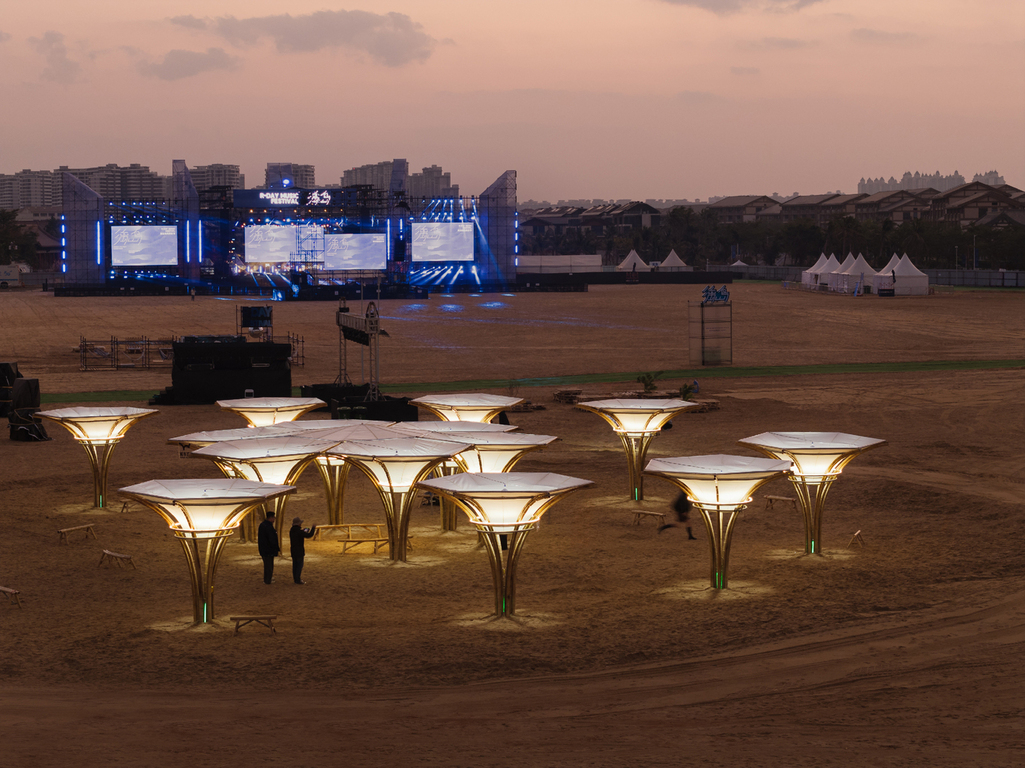
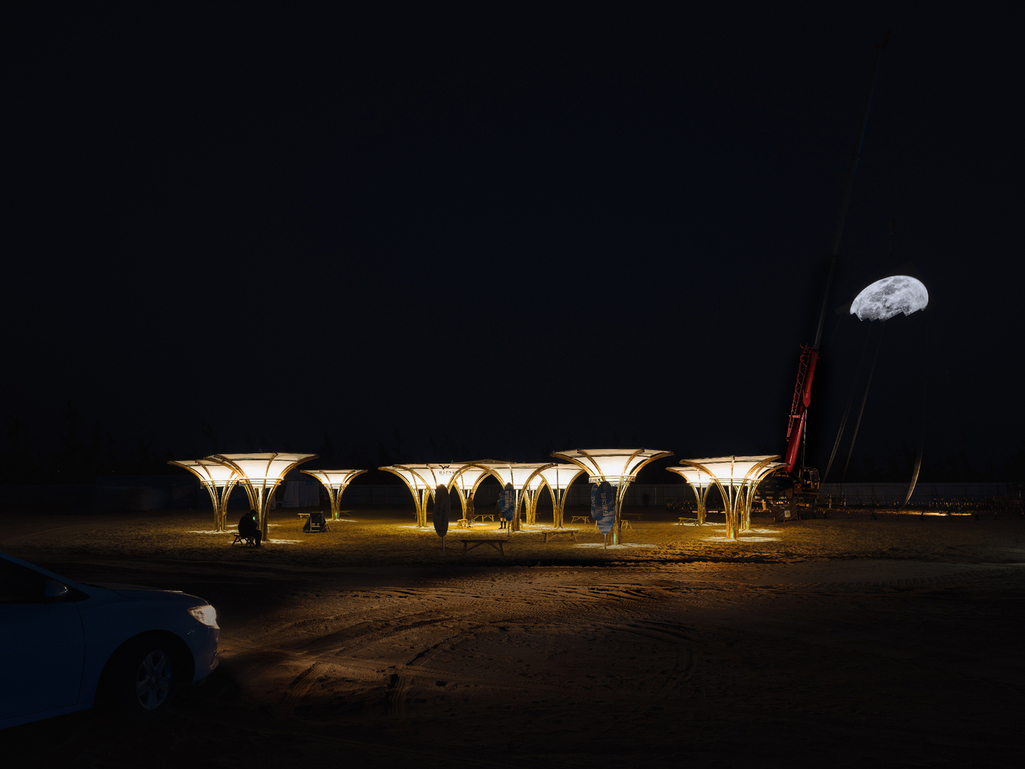
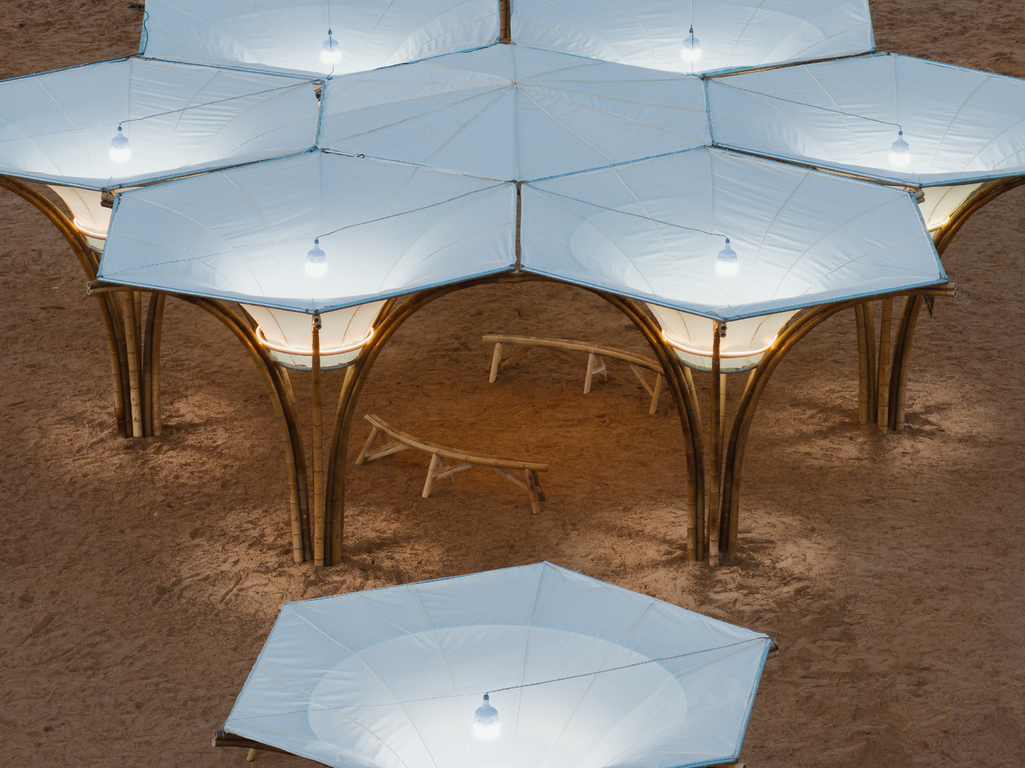
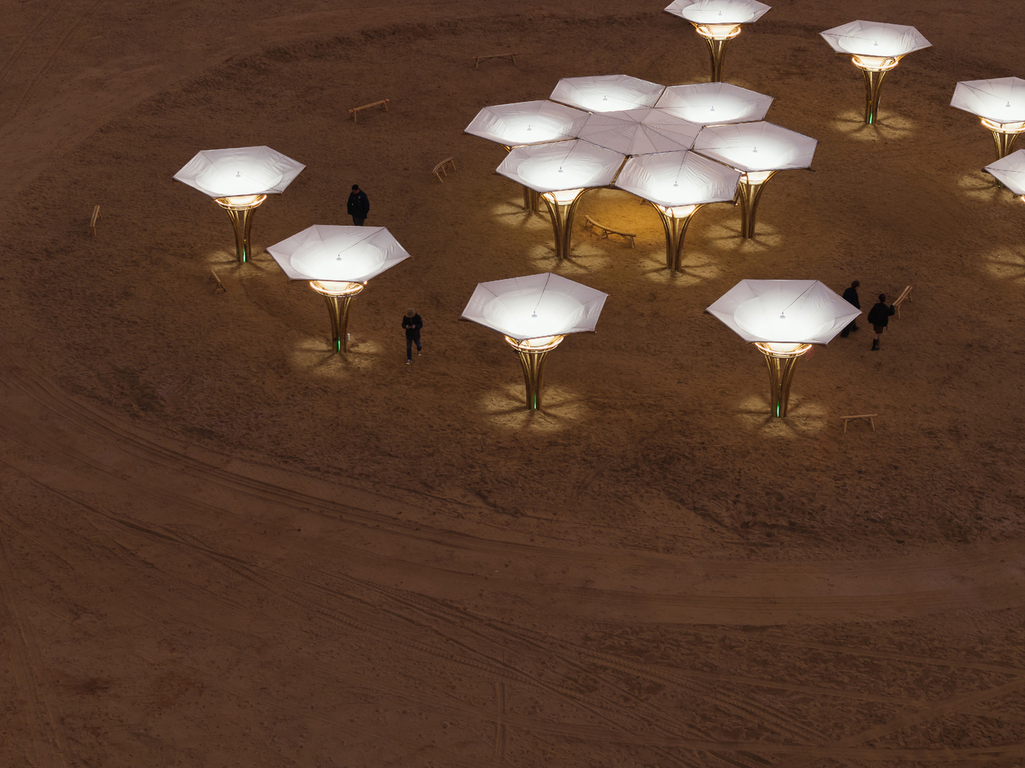
Project info
Project name: Urban Nomad Art Museum
Architects: Also Architects
Location: Haikou, China
Design team: Valo Xiao, Ziming Ye, Jane Zhang, April Lo
Curatorial institution: R-Day Music Festival & Urban Nomad Art Museum
Curator: Ottavio Zhang
Lighting design: WOY Lighting
Construction unit: Innovbamboo Architectural Technology Co., Ltd.
Photo credit: INSPACE








